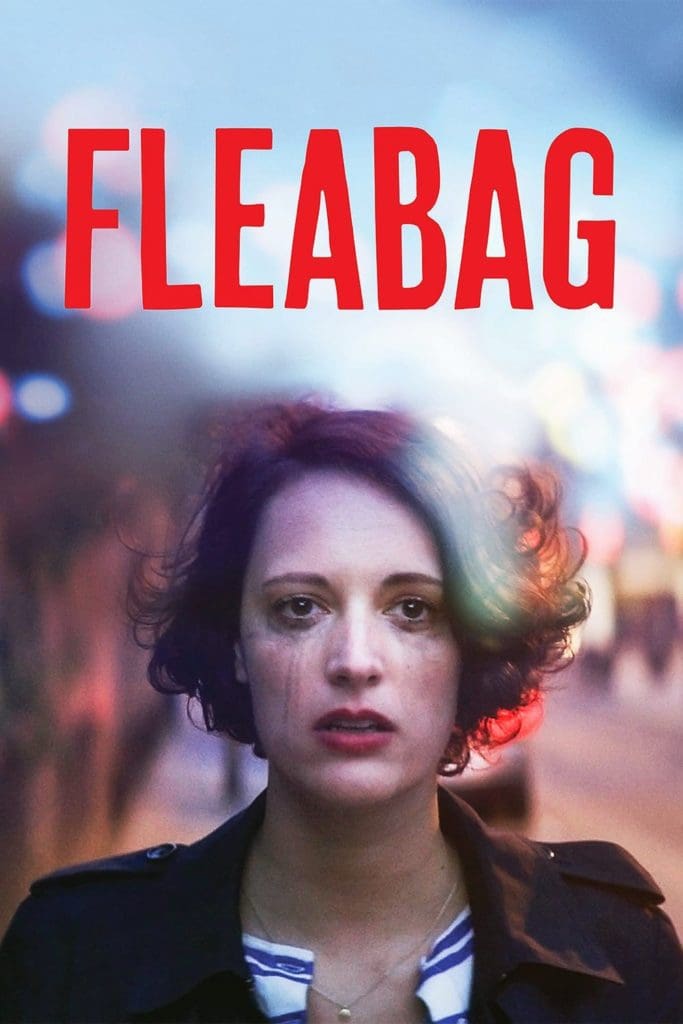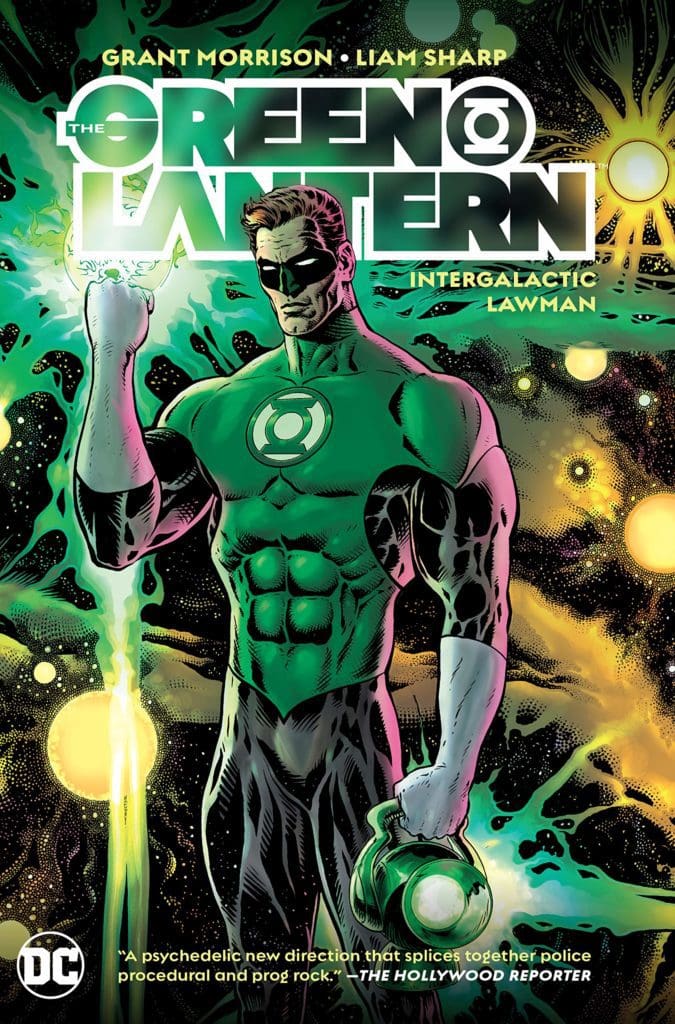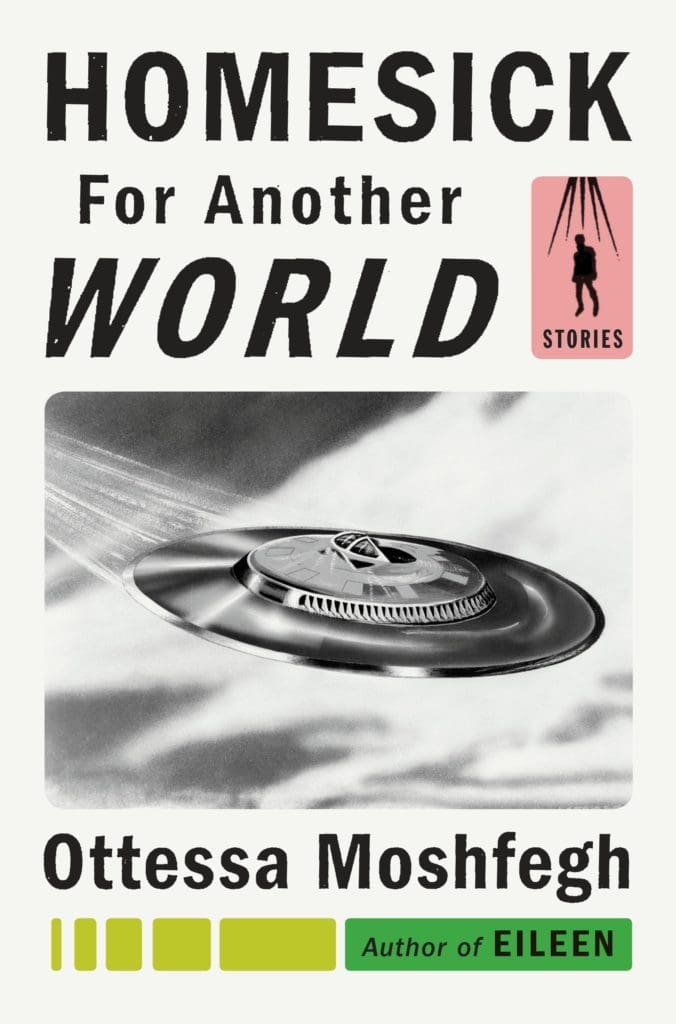There’s no doubt March has been an incredibly stressful time for our community—it’s our hope with this Staff Recommends that we can, at the very least, recommend some books, graphic novels, films, and other works that might offer welcome relief or distraction as we all Shelter in Place:

Alicia Long, Intern: On the upside of things, if you’re stuck at home there’s likely ample time to delve into the ever-accumulating list of shows you’ve been meaning to watch. And with only two seasons and twelve short episodes between them, Fleabag is the perfect series to ease your way into binge-mode.
The cast of characters: A very serious, strictly-business sister, with an incredibly rude snake of a husband. A dad who can’t connect with his daughters, and instead sends them to a series of off-beat women’s events as a means of filling the now empty role of “mother.” An evil artsy step-mother whose valuable sculpture has suddenly gone missing (cough cough, fleabag). An unfortunate line-up of dates. And the star of our show, Fleabag, who’s growing a bit desperate in all departments of her life. As she juggles questionable relationships and family drama, she is all the while struggling to keep her humble guinea pig-themed cafe afloat and keep a resurfacing trauma out of view.
Relentlessly witty and darkly humored, Fleabag breaks the fourth wall, and puts on a brave face for the audience, turning even the bleakest situations into a joke. But this, we come to understand, is her way of putting up a front. She is quick to swat away a helping hand, preferring instead to get by (just barely) on her own. As things become more and more complicated, we begin to see the cracks in her facade—that underneath her ‘I-don’t-give-a-shit’ and ‘sorry-not-sorry’ attitude, she’s indeed fazed by the weight of her actions. There is a much unsettled hurt and guilt eating away at the woman who looks into the camera, putting on a show.
Fleabag has been recommended to me over and over, to the point that I’d almost felt reluctant to watch it. But it’s proved well worth the minimal effort I put forth to do so, and my hat’s off to writer/producer/lead actress Phoebe Waller-Bridge. Due to the show’s ability to maintain an intense sadness and hilarity in one breath, it’s quickly become a favorite of mine. Despite all the losses and let-downs, there’s an odd hope that lies in this story, one that reminds us to hold close to the ones we have, and to take the helping hand when it reaches out.

Alecsander Zapata, Intern: Grant Morrison’s The Green Lantern: Vol 1: Intergalactic Lawman marks uncharted storytelling territory for both the author and the titular character. Morrison has, in his storied thirty-plus years writing comics, been recognized for his high-concept, psychedelic, and sometimes bizarre subject matter. Likewise, the Green Lantern mythos has frequently been used by DC Comics as a bombastic cosmic spectacle. It wouldn’t be inaccurate to refer to the Green Lantern Corps as DC’s answer to Star Wars.
Interestingly enough, Morrison has decided to “ground” the character and his lore, despite being perhaps the last writer one would expect to do such a thing. Abandoning space opera and universal stakes and long story arcs, Morrison has decided to return the Green Lantern—here he uses the Hal Jordan version of the character—to his oft-ignored roots as an everyday space cop. The volume’s subtitle, “Intergalactic Lawman,” underscores exactly how Morrison treads new ground with his take on the mythos.
In the six-issue volume, we are treated to a space police procedural. Rather than having Jordan save the galaxy or lead the Corps in a universe-spanning war, Morrison has him interrogate perps with an inverted good-cop-bad-cop routine, bust a black market trading ring, go undercover to infiltrate a rising terrorist group, and get in a good old-fashioned fist fight with some shape-shifting aliens in the Mojave Desert.
Even if it had just been left at that, it would have still been a bold and refreshing take on the character, but Morrison can’t resist the mind-bending weirdness which he has made a career out of: the interrogated perp is a rich and spoiled spider-humanoid with parental issues, the trader in the black market ring is posing as the Abrahamic god and his contraband is the planet Earth, the terrorist group is already aware that Jordan is undercover, and the shape-shifting aliens are uncontrollably attracted to guacamole.
The result is a fresh take on a storied franchise, one that is both weird and grounded. Morrison, long one of the medium’s finest writers, is exploring new territory for both Green Lantern and himself, and in the process elevates this volume above your average superhero comic.

Zack Ravas, Editorial Assistant: If great writing is writing that provokes a strong reaction, then Ottessa Moshfegh has already certified herself as one of the greats. My feelings about the Los Angeles-based author’s work are, in a word, complicated; I don’t know how else to describe my reaction to stories that both attract and repel me in equal measure. Making my way through the scatological depths of her Booker Prize-nominated breakout Eileen was an endurance test; her follow-up, 2018’s My Year of Rest and Relaxation, made for an altogether more pleasant read, though I’m not sure “pleasant” is the descriptor for a novel about a woman who abuses prescription pills to numb herself to the world until the sobering reality of 9/11 comes crashing through her narcotic haze.
But, of course, I don’t read literature in the hopes of experiencing something pleasant and, not unlike my hero Flannery O’Connor, Moshfegh’s writing asserts itself through sheer force of vision. This is nowhere more apparent than in her collection Homesick for Another World, which brings together stories Moshfegh published in several high profile literary journals from 2012 to 2017. Throughout the collection, characters maintain a view of the world that is almost uniformly bleak and askew, and infected with a misanthropy that colors their every interaction. Daily life is a struggle, the human body is often repulsive and always beyond our control, and substances such as alcohol and pills become required to regulate experience. The opening piece, “Bettering Myself,” is one of the best, and follows a young woman grappling with alcoholism as she teaches at a Catholic high school in New York:
When it got dark I’d go out again for more forties and, on occasion, food. Around ten p.m. I’d switch to vodka and would pretend to better myself with a book or some kind of music, as though God were checking up on me.
“All good here,” I pretended to say. “Just bettering myself, as always.”
Or sometimes I went to this one bar on Avenue A. I tried to order drinks that I didn’t like so that I would drink them more slowly. I’d order gin and tonic or gin and soda or a gin martini or Guinness. I’d told the bartender—an old Polish lady—at the beginning, “I don’t like talking while I drink, so I may not talk to you.”
“Okay,” she’d said. “No problem.” She was very respectful.
“Dancing in the Moonlight” arrives later in the collection and is another highlight. The story concerns a Manhattan yuppie type whose obsession with expensive clothing (to the detriment of all else in his life) and Hollywood movies would not be out of place in a Bret Easton Ellis novel: “At home, I wore satin pajamas—burgundy and blue striped top and bottom from Machaut—and a heavy Peruvian parka I’d won on Ebay. I had recently splurged on rabbit fur-lined deerskin gloves at Modo and a custom-ordered cashmere hat from an atelier in Tokyo that I’d read about in Mireille. I’d had to measure the circumference of my head for it…My bank account was empty.”
Typing that out, I realize I’ve been under-selling the mordant sense of humor one easily finds in Moshfegh’s writing. She excels at the kind of cringe-laughter that used to be Welcome to the Dollhouse director Todd Solondz’s stock and trade. The tragic and the morbidly comic are expertly woven together in my absolute favorite story by Moshfegh, the one I’d argue is her tour-de-force: “No Place for Good People” (even the title sounds like a Flannery O’Connor story). We follow a middle-aged man who, upon the death of his wife, takes a job at “a residential facility for adults with moderate developmental disabilities,” where he is “responsible for the daily care of three grown men.” It’s on a birthday excursion to the restaurant Friendly’s that Moshfegh turns the erstwhile Midwest food chain into the microcosm of all the awfulness in our pitiful and pitiable universe:
The place was full of fat ladies and their men, who looked wrinkled and haggard, heaps of mashed potatoes disappearing under the crooked awnings of their thick mustaches. There was one table of pug-nose young women, bored and stirring their milkshakes with their straws, a half-eaten plate of fries split between them. A few children fussed and lolled around in their high chairs. The air was humid, the lighting bright and fluorescent, the carpet gray and stained. It was not a happy place.
Pleasant is overrated. Not every book conveys the world this way, and I wouldn’t want them to, but dazzlingly dismal sentences like those ultimately turned my resistance into a healthy appreciation, nay, love for Homesick for Another World. I suspect the mighty Ottessa Moshfegh and her negative human interest stories are here to stay. Her upcoming novel, Death in Her Hands, has seen its release delayed, but remains one of my most anticipated titles for 2020.

Oscar Villalon, Managing Editor: When this 431-minute movie—winner of the Academy Award for Best Foreign Language Film, and unofficial winner of the Most Expensive Movie Ever Made in the Soviet Union—was restored and re-released in movie theaters last year, I felt admiration for those committed cineastes willing to sit for seven hours to watch all four parts of this splendor of a film on the big screen. But also envy—who has the time? Then the movie arrived on the Criterion Channel not too long after its theatrical run. Now to enjoy at my leisure this sumptuous narrative, with its swooping cameras and stunning aerial shots! And on my sofa, no less, as common sense would dictate. But again, who had the time?
Now, we all have a bit more time, even if that comes at the expense of sleep, which seems harder to attain in these anxiety-ridden nights. I am half-way through the movie, but can confidently say it is a singular work of film and one of the best literary adaptations I’ve ever seen. It is also, despite its gorgeous embrace, apt to cause you to look away, lost in thought not unlike Pierre and Andrei. After all, this ability to make art of incredible ambition and beauty, all during the Cold War and under a regime of bone-breaking oppression, cannot but get one thinking about the resiliency of people and how we express our hope for a better future. Then there’s the knowing that just one year after the last part of the film was released, tanks would roll into Czechoslovakia and crush the Prague Spring. (To say nothing about Martin Luther King, Jr. and Robert F. Kennedy being assassinated that year, and the general awfulness that characterized 1968.) We are buffeted by merciless events, but do we still not have the dances, the friendships, the great loves? Are we not in the middle of a story still being told, all these many many years?
